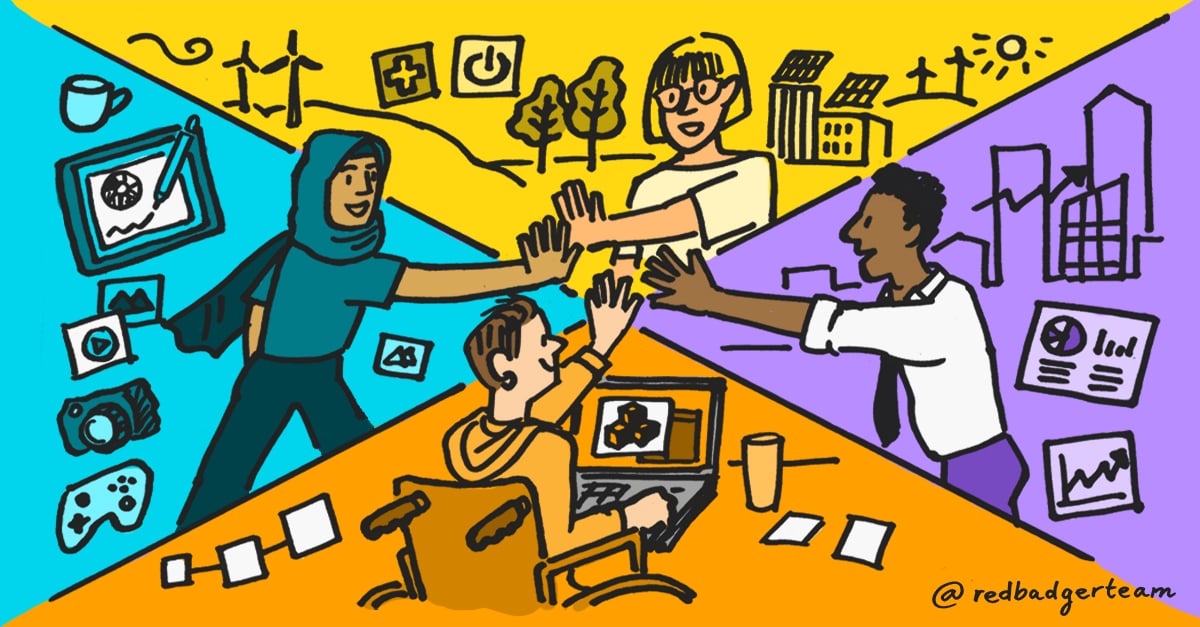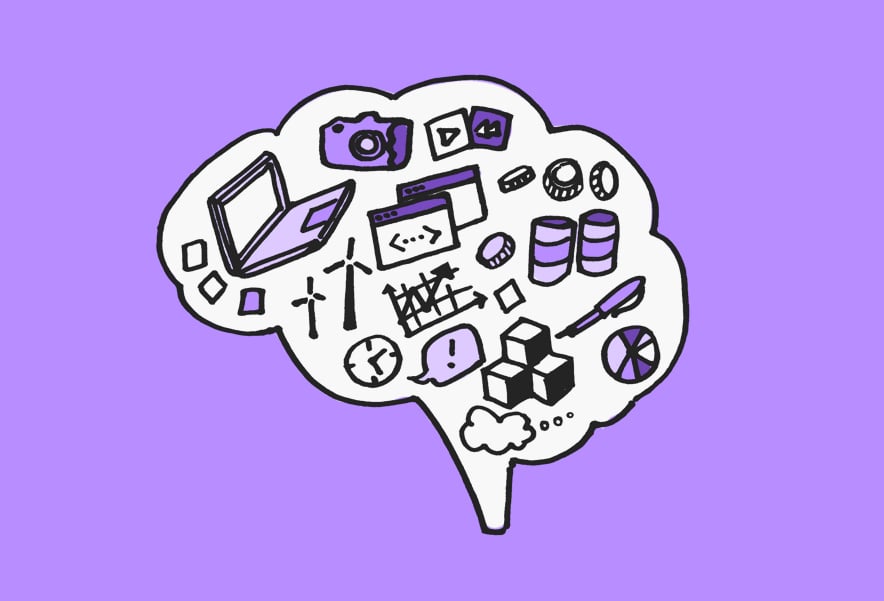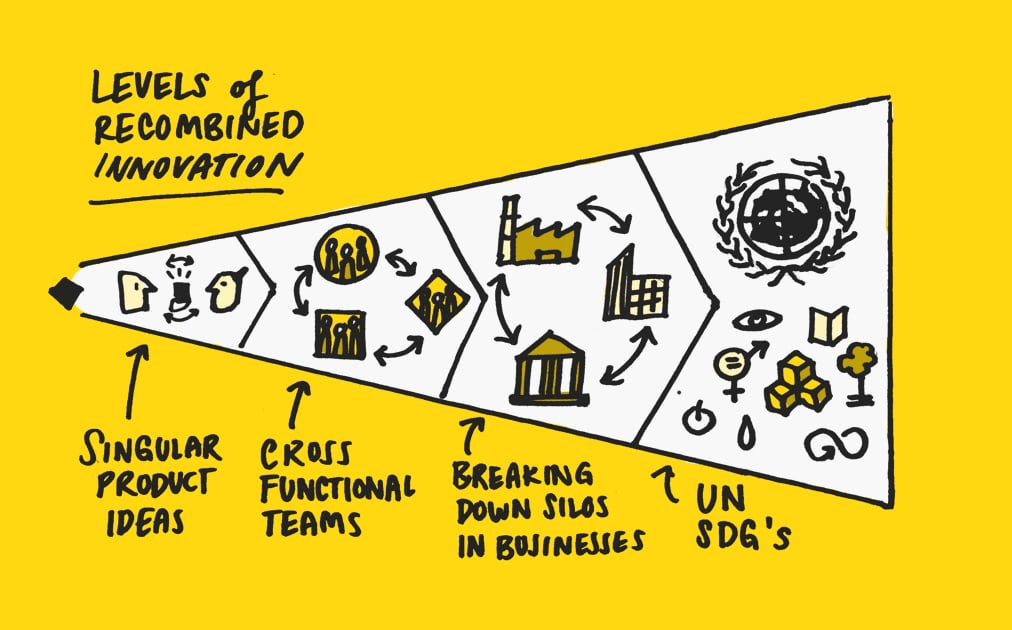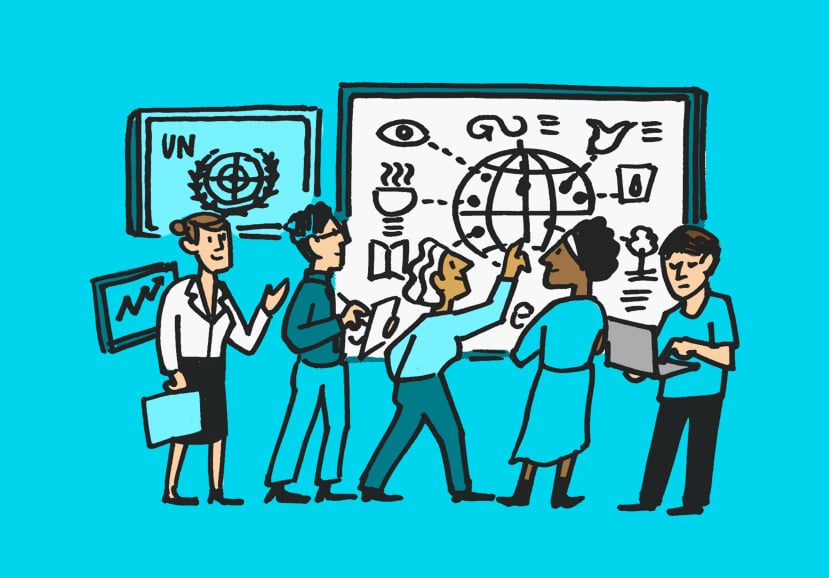Reflections from Red Badger's 2025 Partner Day
Dive into Red Badger's Latest Annual Partner Day and learn how alignment, strategic hires, and client trust are central to how we're creating shared...
Cain Ullah discusses the power of diversity for innovation: from singular ideas up to solving the UN's Sustainable Development Goals.

COVID-19 has impacted our world in unprecedented ways. Moving away from the tragedy and fear, one positive impact has been that of our environment being able to take a breath of fresh air. The example of the Dhauladhar mountain range being seen from over 200km in Jalandhar, India for the first time in many decades is one of the sure signs that through behaviour change, our actions can have an incredible impact on improving society.
The question is, how do we continue this trend of significant environmental improvement, and other important social impacts, in a post-COVID-19 world when we resume our usual lives?
The answer to that is by using recombinant innovation, the collaboration of diverse minds and the breaking down of organisational and industry silos to form coalitions. I explore exactly why this is so vital, and describe an easy way for you to get involved through our Mission Beyond initiative.
In Innovation in the collective brain, Michael Muthukrishna and Joseph Hendrich argue that innovations do not come from individuals who possess a certain genius; they are inspired and enabled by previous generations’ and cultures’ knowledge and experiences. This is what they call the ‘collective brain’: a cumulative combination of different lived experiences that has been enabled by the sociality of the human species.

They state that there are 3 main sources of innovation: serendipity, recombination and incremental improvement. Whilst all three require a level of sociality and passing on of others’ experiences and knowledge, recombinant innovation is the one that is both highly impactful and can be created within designed environments. Thus, it is the strongest innovation type that gives businesses and research facilities a systematic way to create real innovation.
Recombinant innovation is an innovation created by recombining different elements of cultural knowledge and experiences in new and different ways. Put simply, ‘new ideas are born at the social nexus where previously isolated ideas meet’.

The most crucial part of recombinant innovation is the collective brain: the pot of ideas from different cultural experiences and ways of thinking, and the ability to recombine those ideas in new ways.
The key to this is diversity. Anita Woolley, Associate Professor of Organizational Behavior at Carnegie Mellon, makes the point that whilst there are ethical and social responsibilities regarding diversity, research has shown there are also great business benefits for having diverse teams.
Matthew Syed is a leader in the diversity space, particularly around cognitive diversity. Cognitive diversity is the diversity of thought-process, how one person thinks about a problem in one way and another thinks to solve it in a completely different way.
The clear example Syed gives in his book Rebel Ideas is that if you are to take 10 people who are homogenous by their cultural experiences and diversity heuristics, if each person comes up with 10 ideas, the likelihood is that those 10 ideas from each person will be the same, leaving a total of 10 ideas.
However, if you were to take a culturally and cognitively diverse set of 10 people, and they all came up with 10 ideas each, it’s highly likely these ideas will all be different from each other, resulting in a total of 100 ideas - 1000% of the homogenous group.
Syed also discusses how immigrants make disproportionate contributions to technology, patent production and academic science, whilst also being twice as likely to become entrepreneurs.
He says ‘Estée Lauder, Henry Ford, Elon Musk, Walt Disney and Sergey Brin were all immigrants. 43% of the companies in the Fortune 500 were founded or co-founded by immigrants or the children of immigrants, rising to 57% in the top thirty-five companies.’
He goes on to say that ‘when they see the business ideas in a new country or a particular technology, they do not see something immutable. Irrevocable. Set in stone. They see something that could potentially be changed. Reformed. Amended, adapted, or subject to recombination. The very experience of seeing different places seems to offer psychological latitude to questions conventions and assumptions’.
Interestingly, it isn’t just business leaders that are pushing the importance of diversity; academic research also showcases the importance of diversity when it comes to innovation.
Social scientists, Maddux et al, found that individuals with multicultural experiences could facilitate better idea flexibility i.e. had more creativity in solving problems in multiple ways; had better awareness of underlying connections and associations; and could overcome functional fixedness (seeing an object’s potential use as not just that of the original design). These abilities of creativity and flexible mindsets are key in creating an environment that can enable innovation.
What’s so incredible here is that this kind of innovation-enabling environment doesn’t depend on serendipity and has a much higher return on investment than innovations that depend on incremental improvement.
A recombinant innovation environment can be facilitated two-fold - through both people’s individual multicultural experiences, but also through bringing together a diverse mix of people who are from a wide range of different cultures to create a collective brain.
Recombinant innovation can be applied at many levels of scale. We see that recombinant innovation can be successful from the ideation stage around a single decision, all the way up to solving the world’s grandest challenges.

At Red Badger, we embed diversity and recombination to innovate at every stage of the lifecycle of a client engagement.
From rapidly exploring and validating new product ideas, to breaking down business silos and working in cross-functional teams in a digital transformation project, diversity of perspective, knowledge and experience alongside recombination enable us to create real impact whatever the scale of our work.
But we can have an even greater impact. The UN Sustainable Development Goals (SDG’s) outline some of the world’s grandest challenges and are goals such as solving world hunger and reducing inequalities. They require incredible, innovative solutions from global players to begin to tackle them, and recombinant innovation is one of the best ways to take impactful action.
To do this, business leaders need to step outside of their organisations to collaborate across sectors and industries, sometimes even requiring competitors to work together, and create coalitions creating recombination and diverse thinking at the largest scale.
Great examples of this thinking have been put into action during the current COVID-19 crisis. We have seen unheard-of collaborations between companies and industries that have come together to solve crises that are affecting the world.
For example, Ford, GE Healthcare, 3M and the US FDA are working together to design, approve and produce modified ventilators. A remarkable collaboration of the automobile, healthcare, electronics, pharmaceuticals, manufacturing and regulation sectors all coming together to combine their independent knowledge to solve new problems.
Not only does this show us how recombinant innovation really is possible at the highest level, but also that it is having a dramatic impact. Some good news we all need to hear.

So how can you get involved with solving the world’s grandest challenges?
Taking the collective brain and diversity model of recombinant innovation, we conceived the concept of Mission Beyond Product to foster recombinant innovation on the global scale that is so vital to solving these issues.
Mission Beyond Product is a business community of leaders that facilitates cross-industry collaboration by bringing the leaders of some of the most influential companies in the world from different industries to ideate and innovate together.
This extreme level of divergence and diversity of experience and knowledge enables an accumulation of isolated ideas that will create an extraordinary collective brain - one great enough to innovate at the level needed to solve the SDG’s.
Our hope is that, as hard as this pandemic is, the positive outcome is going to be a change in how people work; to organisations, to industries and to governments. Recombinant innovation will accelerate, especially in digital, to collectively solve some of the world’s biggest challenges, with a focus on purpose, on community, on civil society and on the planet.
If you are interested in joining the movement to make change happen, please get in touch.
Dive into Red Badger's Latest Annual Partner Day and learn how alignment, strategic hires, and client trust are central to how we're creating shared...
Learn about the challenges of handling high-volume transactions in eCommerce, from technical strain to security vulnerabilities.
Explore the complexities of scaling internationally beyond mere replication, focusing on localisation, technology, and cultural nuances.
Add a Comment: